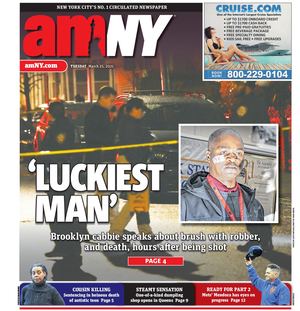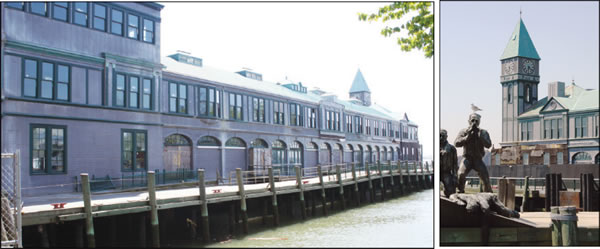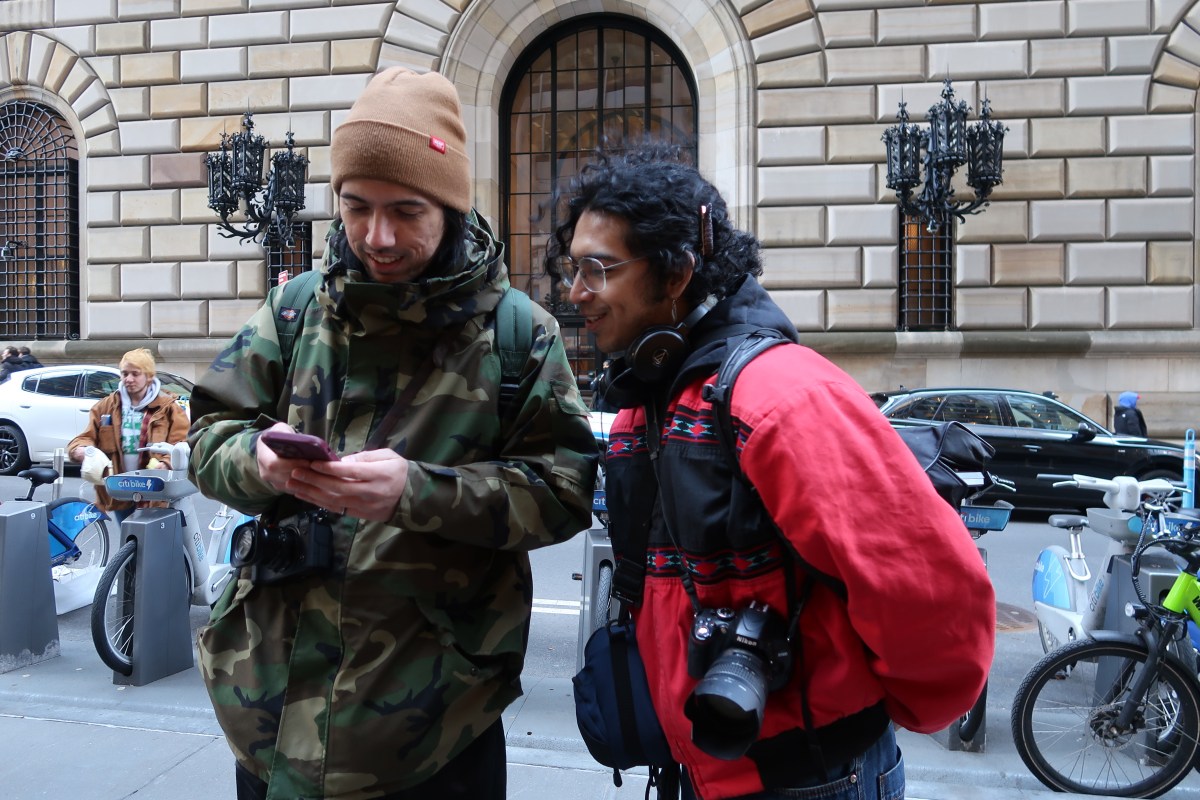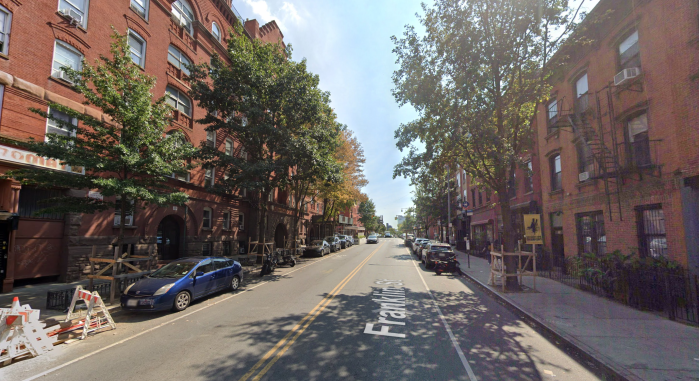By Julie Shapiro
Pier A sat undisturbed for decades, fenced off and inaccessible.
Now, under the Battery Park City Authority, work to restore the 122-year-old landmarked pier once again appears to be moving forward.
The authority took over the project last December and is about to sign a 49-year, rent-free lease with the city. The authority sees Pier A as a new hub for tourists, who would board the ferries to the Statue of Liberty and Ellis Island from the pier. A restaurant, catering hall, souvenir shop and café have been the most prominent uses under consideration in recent years.
“[Pier A] has been just sitting there for 25 years or more,” James Gill, chairperson of the B.P.C.A., said at the authority’s Tuesday meeting. “It is an eyesore [and] it is ugly.”
The pier, which juts into the harbor where Battery Park meets Battery Park City, has faced several stalled developments in the past, most recently when Wings Point Development Corporation sat on the property for nearly 10 years. On Tuesday, Gill reassured the authority board that this time, development plans won’t fall through.
“It’s a question of going and doing it,” he said. “We will not fail.”
The authority already sent divers beneath the pier to inspect its substructure, and is currently bidding out contracts for repair work. The newly hired architect, H3 Hardy Collaboration Architecture, and a retail consultant are ready to go. The authority hopes to complete a conceptual framework for the project by August and have a final design by next May. The pier could reopen as soon as 2011.
“We hit the ground running,” said Susan Long, who is coordinating the Pier A project for the authority. “There are a lot of balls in the air already.”
That doesn’t mean it’s all smooth sailing ahead. The city is keeping close reins on Pier A, limiting the authority to an initial budget of $30 million and retaining veto power over potential tenants for the pier.
Some board members were concerned the project could stall again when a new mayor takes office at the beginning of 2010.
Charles Urstadt, vice chairperson of the authority board, and several other board members were also concerned about the $30 million cap. The number is the cost estimate the city received several years ago from Wings Point, the pier’s previous developer who never got off the ground. The estimate has not been adjusted for inflation or rising construction costs.
“We’re a little uneasy about the number, but we have no real basis to say it’s wrong,” said Alexandra Altman, chief counsel for the authority. Until the authority designs the pier and bids out the work, no one will know what the exact cost will be, she said. The city is sticking to the $30 million figure to make sure the project does not grow in scope or cost, she said.
Even with a new mayor, Gill thinks the city will continue to support the project and authorize more funding if necessary.
“It would be difficult for anyone to stop that project in mid-stream,” Gill said, in response to concerns about the project getting delayed. “It’s clear as day it is a plus, for the city, the state and the country.”
The authority is in discussions with the National Park Service to move the Statue of Liberty and Ellis Island ferries over to Pier A. Tourists would purchase tickets and go through security on the pier, rather than in the center of Battery Park. The ferries would pull up to a floating dock on the pier’s end, where the water is already deep enough for them without dredging.
Some Battery Park City residents are worried that moving the ferries to Pier A will flood the pier with snaking lines of tourists, rather than resident-friendly uses. Gill, though, was not sympathetic.
“Battery Park City is not the exclusive property of the people who live and work here,” Gill told Downtown Express. “It doesn’t bother me that people come visit us. The idea that we would seal off the views…for those who live here is ridiculous.”
To reduce the long lines for the ferry, Statue Cruises, the ferry operator that took over the Statue of Liberty and Ellis Island routes last summer, is moving to timed tickets. That would allow tourists to buy their tickets for a particular departure and then spend time and money in the surrounding neighborhood, rather than waiting in line.
In addition to the ferries, under the lease, the city would allow several other uses for the pier: retail, restaurants and offices. The city wants to make money off of the tenants, to recoup as much of the $30 million in construction costs as possible, Altman said.
That means a nonprofit museum is an unlikely fit for the space. Gill has already tried to interest the Fire Department in moving its museum to Pier A, but Commissioner Nicholas Scoppetta wants to keep the museum in Soho.
Amid talk of preservation and restoration of the pier, Urstadt had a different idea.
“I always felt the best cure for this piece of property was a limited and specified tsunami,” he said.
Without the pier’s historic fire boathouse, Urstadt would extend Battery Park City’s esplanade southeast to Battery Park. The ferries would pull up to the esplanade.
“It could still be done,” Urstadt, also a longtime proponent of extending B.P.C. with landfill to the north, said wistfully. “Thirty million dollars would go a long way.”
Gill cut off that train of thought, reminding the board that the pier is landmarked. Pier A is on the National Register of Historic Places and the Historic American Engineering Record.
Alex Herrera, director of technical services for the New York Landmarks Conservancy, was surprised to hear that authority board members referred to the pier as an eyesore.
“That’s a complete exaggeration,” Herrera said in a telephone interview. “Even empty, it’s beautiful.”
He can see Pier A from his office at One Whitehall St.: the tin siding, the green and white painted arches and the clock tower. Pier A is the only Victorian pier left in New York City, and Herrera calls it an “ornament” for Lower Manhattan.
The clock, installed in 1919, is a memorial to soldiers killed in World War I. It is one of only two clocks on the eastern seaboard to mark “ship’s time,” which means that the bell tolls not to count the hours but to mark shifts, meals and chores aboard a boat.
Pier A most recently docked fireboats, which traveled the coast and pumped ocean water to extinguish fires. Until the 1980s, the firemen passed the time between emergencies on Pier A, Herrera said.
Pier A was originally part of the land allotted to Battery Park City, but the authority has not traditionally controlled it. The authority will lease the pier from the city and then develop it, contracting with subtenants the city approves. The 49-year lease will be renewable for up to four additional 10-year terms.
Before approving the lease with the city, the B.P.C.A. board had to vote on the environmental impact of the work. Board members supported the opinion of environmental consultants, who said that the renovation of Pier A would not have a significant impact on traffic, noise, air quality or natural resources near the pier. If the environmental conclusion holds, the authority will not have to do a more comprehensive environmental impact statement.
Despite the obstacles facing the project, Gill is optimistic.
“This fantastic facility is going to enhance New York for many, many years to come,” he said.
Julie@DowntownExpress.com
































